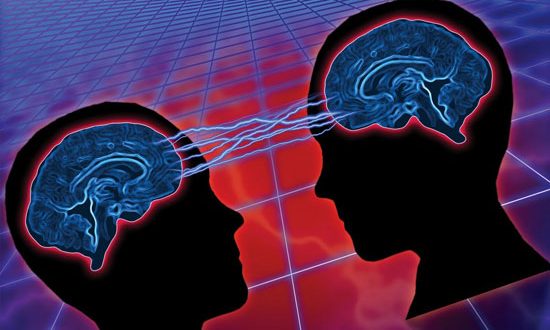The start of the new year is a great time to look forward to forecast what’s next. In that spirit, IBM published its annual ‘5in5’ forecast today, providing a glimpse into five innovative areas of technology that Big Blue expects to see in the next five years. A core element of all five predictions is the use of Artificial Intelligence (AI).
Windows into Mental Health
One of the developments identified in the list is the use of deep learning machine intelligence to help clinicians predict and monitor brain and mental health disorders such as psychosis, schizophrenia, mania and depression.
The company said its scientists are currently using transcripts and audio recordings of psychiatric interviews to find speech patterns that can indicate such disorders.
https://www.youtube.com/watch?v=DnYUNQVcVnI
Hyperimaging and AI will give us superhero vision
Today, there are all sorts of devices that can peek into portions of the electromagnetic spectrum – for example, we have x-rays and MRIs and radar – but each only looks at one segment. In five years, IBM predicts that new devices using hyperimaging technology will combine multiple bands of spectrum to provide even more insight, or even to let the visually impaired see. “You can be like Geordi LaForge in Star Trek: The Next Generation, with his visor,” Martin said.
Hyperimaging technology could give drivers a multi-spectrum picture of what’s ahead when visibility is limited and cognitive computing technology could take that view and make sense of it — differentiating between, say, a pedestrian and a stray garbage can in the road, or between wet pavement and black ice. Or, it could detect whether food is safe to eat, or tell us its nutritional value. The possibilities are virtually endless.
https://www.youtube.com/watch?v=TaOOb89ilYk
Macroscopes will help us understand Earth’s complexity in infinite detail
There’s a lot of data out there, and thanks to IoT, even more is coming. Already there are more than six billion connected devices, from weather sensors to refrigerators, generating tens of exabytes of data monthly. Yet data from these sources are mostly looked at separately.
In five years, IBM believes that machine learning algorithms and software will let us aggregate all of that data and gain insights. For example, by pulling together weather data, satellite images, soil analyses, and water data, farmers will be able to design the best mix of crops for their land, decide the best place to plant each crop, and determine how to generate optimal yields. Martin compared the concept of macroscopes to an orchestra: each individual instrument has its own strength, but when they harmonize, there’s greatness.
https://www.youtube.com/watch?v=qKMugpYD6tA
Medical labs ‘on a chip’ will serve as health detectives for tracing disease at the nanoscale
The earlier we can catch disease, the more chance we have of nipping it in the bud. And early information about the state of our health can be gleaned from tiny bioparticles in body fluids. The trouble is, existing sensors can’t work at that scale and, Martin said, today’s sensors are passive and dumb, and do only one thing. IBM Research is working on technology that can separate and isolate bioparticles as small as 20 nanometers in diameter, which would allow access to DNA, viruses, and exosomes (small particles within a cell). Those particles could be analyzed to potentially find disease even before symptoms manifest.
In the next five years, IBM thinks that a lab on a chip combining multiple smart sensors could look at biochemistry, then send its data into the cloud to combine with that from other technology such as a health sensor bracelet monitoring temperature, heartrate and other physical factors. AI would pull it all together into a complete picture of an individual’s state of health.
https://www.youtube.com/watch?v=c0o0myb7Te4
Smart sensors will detect environmental pollution at the speed of light
Some pollutants are horribly visible, like the smog blanketing some Chinese cities these days, while others are invisible, but just as deadly. Methane, for example, is a primary component of natural gas, but it is also the second largest contributor to global warming, after carbon dioxide, if it leaks into the atmosphere, according to ARPA-E’s MONITOR program.
In five years, IBM says that affordable sensing technologies will be able to be deployed around natural gas wells, storage facilities, and pipelines to detect leaks in real time. The company is working with producers and government agencies to develop an intelligent methane monitoring system featuring silicon photonics, an evolving technology that transfers data optically.
https://www.youtube.com/watch?v=eXF14qeJzfk
The sensors could be embedded in a monitoring network consisting of in-ground, infrastructure-based, and even drone-based sensors whose data, when combined with real-time information on winds, satellite data, and historical trends, could be used to build models detecting the origin and quantity of pollutants.
One common factor in all of these predictions, Martin said, is that all of the technologies work in real time, allowing users to be proactive. “Right now we’re always reacting,” he noted. “Real time with a cognitive underpinning allows us to adapt. We can get ahead of things.”
Agencies/Canadajournal
 Canada Journal – News of the World Articles and videos to bring you the biggest Canadian news stories from across the country every day
Canada Journal – News of the World Articles and videos to bring you the biggest Canadian news stories from across the country every day




Why don’t they use that great AI and think of a way to NOT quietly lay off tens of thousands of people last year and this coming spring, while giving their executives massive bonuses?